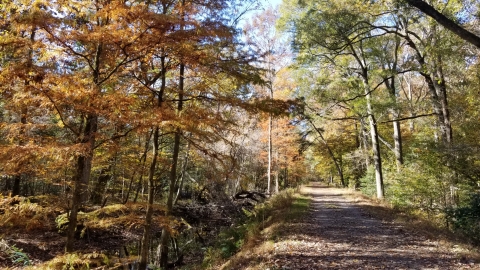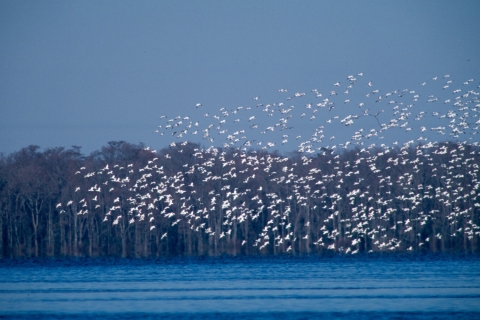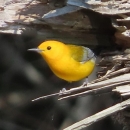Seasons of Wildlife
Spring
A beautiful time on the refuge. The forest fills with fresh growth and blooms, the weather is moderate, the insects are minimal, and the spring neo-tropical bird migration is upon us. The rare Virginia Least Trillium blooms discretely off the beaten path. Be on the lookout for young turtles, some as small as a walnut, crossing the roads around dusk and dawn.
Summer
Summer in the swamp is hot and humid. Vegetation is lush and the forest is alive with the buzzing of insects. Look for river otters in the ditches, turtles basking on logs, and bears sunning themselves in the treetops. Prothonotary warblers bounce along branches in the forest. Zebra swallowtails gather by the dozens on the ditch roads.
Fall
The insects begin to wane and the days grow slightly cooler. Catch the bald cypress trees turning a brilliant bronze as early as October. Bald eagles return from their summer hangouts and can be seen patrolling the lake's edge or perched on a snag along Lake Drummond Wildlife Drive. Black bears can be spotted making a meal of fallen acorns on a warm day. Look for monarchs making their annual migration and neotropical birds stopping through on their way south.
Winter
A quiet time. Suddenly the bare vegetation exposes the vastness of the refuge. Resident black bears take to their dens, emerging only occasionally on warm days. Elusive mink dart around the flooded forest floor. Tundra swans and snow geese gather, sometimes in the thousands, to rest on Lake Drummond. A surprise dusting of snow may grace the refuge for a few short days late in the season. Spring awaits.
Featured Species
Wildlife thrives here and plant life abounds. It's a home and a stopover for about 47 species of mammals, 200 birds, and 96 species of butterflies, and much more. The diverse ecosystem boasts communities ranging from bald cypress to red maple and the globally rare Atlantic white cedar.










